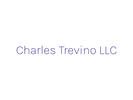|
Rhinoplasty - What Can Go Wrong?The process of rhinoplasty is quite different than the process of other cosmetic surgery, and it may have risks. During the procedure, the surgeon makes several incisions in multiple structures and requires extensive healing. A poor result is unnatural and difficult to correct. Fortunately, most rhinoplasty surgeries are safe, with a 10 percent revision rate. If you have questions or concerns about your surgery, be sure to ask your plastic surgeon.
A rhinoplasty surgeon will adjust the bones and cartilage beneath the skin to create the new shape of your nose. While this process is quite extensive, it is generally safe and can be performed the same day. However, some complications may require a stay in the hospital. Your surgeon will explain what the recovery period will be like, and will provide you with instructions that will help you heal properly. If you are experiencing nausea, fever, or other complications, it's important to follow the doctor's instructions. In the worst case scenario, the nose will be distorted. The surgery can also lead to infections. These infections can be difficult to treat, but most will dissipate within a few weeks or months. Even worse, some patients may have breathing problems after the procedure, and this can cause serious health consequences. One of the most common complications of rhinoplasty is an over-extended tip. The surgeon must take into account the patient's medical history before deciding whether to perform the procedure. Another common complication of rhinoplasty is over-filled area. This can occur due to insufficient reduction of cartilage and aggressive surgical procedures. This condition requires rhinoplasty revision to remove the excess cartilage and support the nasal tip. This can be a painful procedure and a lengthy recovery period. It is possible to have a rhinoplasty revision, which can fix the over-filled area and restore the symmetry between the bridge and the tip. There are no major risks during the procedure. Although rhinoplasty is considered a safe procedure, there are some risks involved. It is possible to have a nasal infection or end up with an unevenly shaped nose. After the procedure, you may experience a blood clot, swelling, or an irregular shape. While the procedure is generally safe, it does have some risks. Some patients may experience a painful recovery after rhinoplasty. The recovery time depends on the severity of the deformities and the quality of the skin. Some cases are "reductive" - removing bone or cartilage to make the nose smaller. Other complications include overly-rotated or under-rotated tip. During a bad nose job, the surgeon might cut the skin, and make the nostril rims flat. This is not an indication of a serious problem. Considering rhinoplasty in Seattle Washington? Talk to Dr William Portuese. https://www.youtube.com/watch?v=xhDm1YveCN8 What is rhinoplasty or nose reshaping? Rhino means nose and plasty means to shape, mold, or form. Rhinoplasty was the fifth most common procedure one by plastic surgeons in 2012, according to the latest statistics released by the American Society for Aesthetic Plastic Surgery (ASAPS). Many plastic surgeons feel rhinoplasty is the most artistic and difficult cosmetic surgical procedure. I agree, because the surgeon makes three-dimensional changes which instantly alter other areas of the nose. How important is the preoperative analysis in rhinoplasty? Accurate preoperative analysis is 50 percent of the outcome. I encourage my patients to bring in photographs of how they envision the results. Only a limited number of experts specialize in rhinoplasty, so do your homework. Visit https://www.seattlefacial.com/procedures/rhinoplasty.html for information regarding rhinoplasty and nose surgery
0 Comments
Leave a Reply. |
AuthorSites of Interest Archives
July 2023
Categories |

 RSS Feed
RSS Feed
